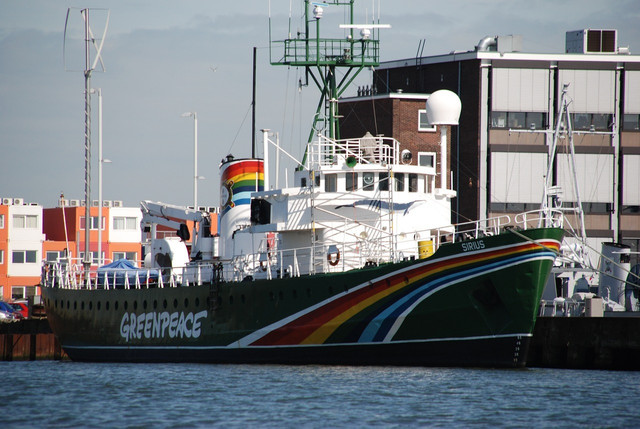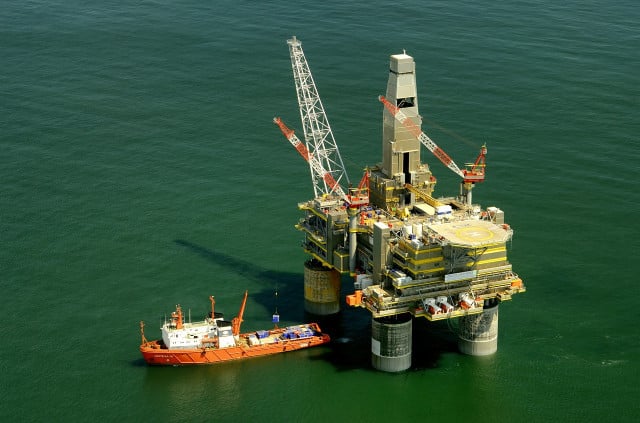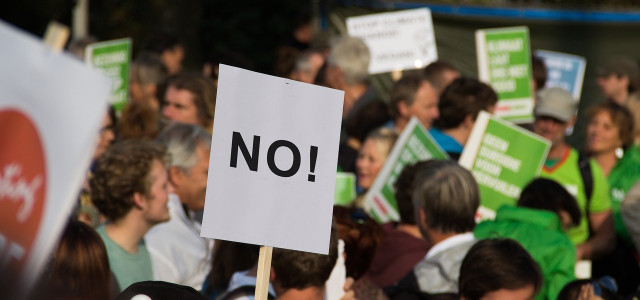In this article we explain the background for the conflict between Greenpeace and Shell and consider why protestors boarded Shell’s vessel on January 31st, 2023.
In 2023, a high-stakes conflict between oil giant Shell and the global environmental organization Greenpeace International escalated. The protest began when activists from Greenpeace International peacefully occupied a Shell platform at sea and refused to leave, sending a strong message that the company must take responsibility for its role in the climate crisis.
The incident between Greenpeace and Shell has sparked a global conversation about the injustices of the fossil fuel industry and the need for companies to pay for the climate damage they are causing.
Here we’ll look at the ins and outs of the conflict and what has precipitated the issue.
Introduction to Greenpeace and Shell

(Foto: CC0 / Pixabay / MrsBrown)
Before we get into the controversy at hand, here’s what you need to know about the two parties involved:
Greenpeace is an international non-governmental organization that engages in direct action, lobbying, and research on environmental issues. Founded in 1971, it is one of the world’s largest independent environmental organizations. The primary aims of the organization are protecting the environment and combating global warming, deforestation, overfishing, commercial whaling, nuclear weapons and nuclear power.
Shell is a British-Dutch multinational oil and gas company. Founded in 1907, it is one of the world’s largest oil and gas companies and part of the so-called six “supermajor” oil players. Shell is involved in various activities, from marketing and production to trading and shipping in natural gas, crude oil, and LNG (liquified natural gas), among other energy resources.
Why Has Shell Come Under Fire?



(Foto: CC0 / Pixabay / StockSnap)
The current “Greenpeace-Shell” crisis between these companies has been precipitated by Shell’s plans to drill for more oil and gas despite its record profits.
Climate change is the main environmental issue at stake in this conflict. The Intergovernmental Panel on Climate Change (IPCC) estimates that global temperatures may rise by 1.5°C above pre-industrial levels by as early as 2030 if drastic action is not taken to reduce emissions. This temperature rise will have a devastating impact on the planet, including more extreme weather events, rising sea levels, and increasing ocean acidity.
Shell is one of the world’s largest oil and gas companies, ranking 4th among leading oil profiteers worldwide. As such, they are part of a global crude oil production industry which has been steadily rising, reaching 4.2 billion metric tons in 2018. This, the EPA explains, has been a significant contributor to accelerating greenhouse gas emissions and climate change.
From oil production to explorations for new reserves, Shell is estimated to be responsible for up to 1.6% of the global CO2 budget. As a result, Greenpeace has earmarked the company over the years, along with others in the oil industry, to take responsibility and pay for the damage it has caused.
Why Did Protestors Board Shell’s Oil Platform?



(Foto: CC0 / Pixabay / 12019)
In 2023, we have seen a spotlight on the most recent conflict between Shell and Greenpeace. The issue has been ongoing since Greenpeace activists boarded Shell’s oil platform early on January 31st, 2023. The main oil rig was being ferried by Shell’s White Marlin vessel and was en route toward the North Sea. Here, Shell intends to begin the reproduction of oil pumping in the Penguins field, an area northeast of the UK’s Shetland islands.
According to Shell, the project will redevelop a further eight oil wells — holes dug into the earth to pump oil and other hydrocarbons to the surface.
Shell estimated the project would result in a price under $40 per barrel, at a rate of 45000 barrels per day — equivalent to $657 million worth of sales per year. They claim that the project is part of a broader effort to decommission another significant oil field in the North Sea, the Brent Fields.
However, Greenpeace protesters argue that the platform is only exacerbating a problem that Shell itself has caused and that the UK government is endorsing the company to continue rather than stop exploration because the country is heavily reliant on fossil fuels.
Greenpeace vs. Shell: Key Points



(Foto: CC0 / Pixabay / Chris_LeBoutillier)
Key points:
- As of 2021, the UK government reportedly has lowered its oil and natural resource production significantly since the 1990s, from 219.4 million tons of oil to 124.1 million tons. However, supporting Shell to reestablish the Penguins field seems to undermine this trend.
- As Greenpeace and other environmental agencies point out, the fossil fuel industry has made over 60 times the profit needed to support economic losses due to climate issues for at least 55 of the most vulnerable countries over the last 20 years.
- Just based on Shell’s whopping $40 billion of profits in 2022 alone, they have no need to expand operations in the Penguins field.
These facts have been met with outrage from Greenpeace and other environmental commentators, who are calling for companies such as Shell to take responsibility for the climate crisis and pay for the climate destruction they are causing. The activists argue that Shell should stop expanding oil and gas production and help mitigate the effects of the climate crisis.
In response, Shell attempted to silence the current protest with an injunction, threatening up to two years of jail time and fines. However, the protest continued as Greenpeace International successfully added two more climbers to occupy the platform. Elsewhere at Shell’s UK headquarters, further protestors demanded the company stop expanding oil and gas production worldwide and pay up for the climate destruction.
The occupation ended on the 12th of February, as protestors left the vessel at the Norwegian port of Haugesund, but not without one final stand as they waved their banners ‘Stop drilling. Start paying.’ for the last time before Shell proceeded to the field. Needless to say, though the protest has ended, it is unlikely this will be the last of its kind in the ongoing conflict between Greenpeace and Shell.
Greenpeace vs. Shell: Takeaways
The protest by Greenpeace against Shell has been the latest in a dramatic showdown between the environmental organization and the multi-billion dollar oil and gas company. Whether or not this was a success for Greenpeace remains in question.
However, it has raised awareness of the risks of drilling in the North Sea and the potential environmental impact. It also highlighted the need for better oversight of companies operating under the guise of economic sustainability.
Ultimately, the protest showed that people could make a difference and that their voices could be heard.
Read on:
- Environmental Activism: How to Get Involved in 2023
- How to Make a Protest Sign and 15 Cool Ideas
- Take Action: 15 Everyday Ways to Combat Climate Change
Do you like this post?






